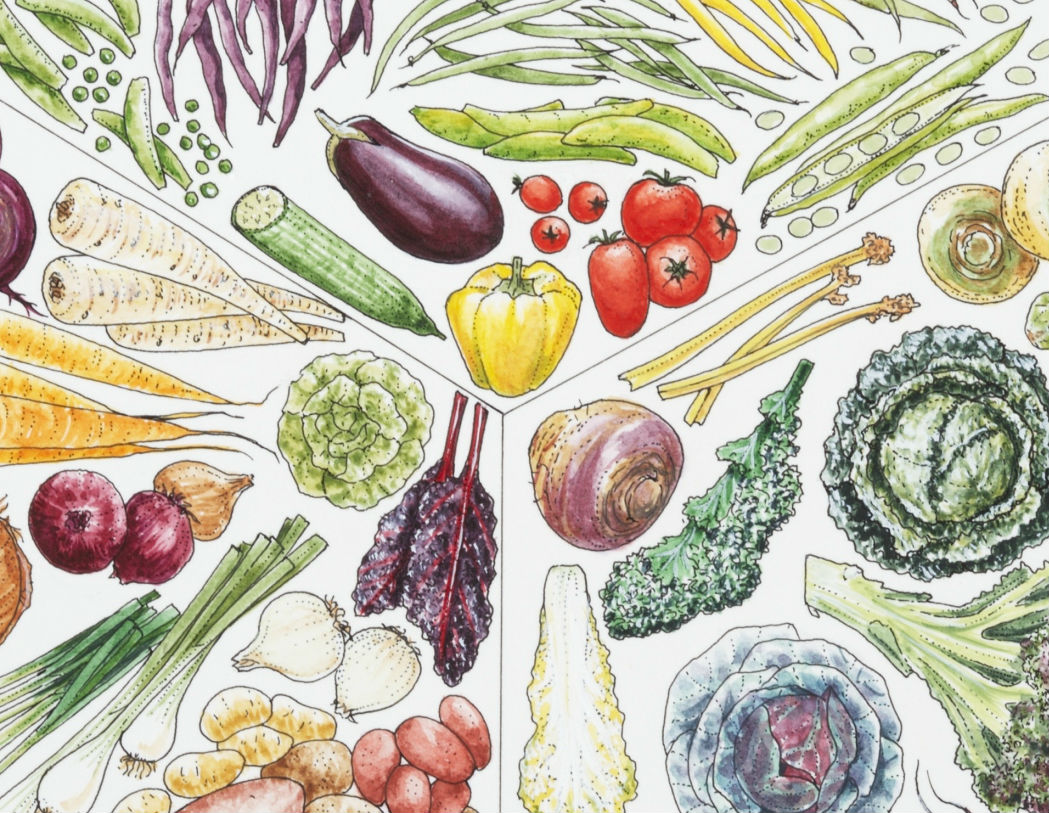
In the New Year, you may be looking to turn over a new leaf. One goal may be to improve your nutrition. Many cancer survivors struggle with food issues. In fact, research shows that up to 80 percent of people with a cancer diagnosis are expected to experience malnutrition at some point during treatment. Even before a diagnosis, as many as 40 percent of people with cancer experience unhealthy weight loss. Unhealthy weight loss can lead to decreased response to treatment, delays in treatment, and reduced quality of life.
You can avoid these nutrition problems! Use new eating strategies to improve your health and wellbeing during cancer treatment. Start today by improving your nutrition IQ.
Here are seven food and cancer facts that you may not know:
1) You can’t get all the nutrition your body needs from juicing. This surprises many people because of the recent popularity of juicing. Juicing is low in protein. Cancer survivors may need extra dietary protein during treatment to combat muscle loss. Pump up your juices by adding a scoop of protein powder, 4-8 ounces of Greek yogurt, or egg white powder to your glass. Always remember, juicing is a great way to add fruits or vegetables to your diet, but should not be used to try to meet all of your nutrition needs.
2) Fiber matters. During treatment you may experience constipation and/or diarrhea. You may need medication to help with these side effects, but there are nutrition strategies that can help as well. First, know your fiber! There are two types of fiber. Soluble fiber is completely digested by the body and aids in reducing cholesterol, stabilizing blood sugar, and getting rid of other toxins present in the gastrointestinal tract. Soluble fiber functions as a bulking agent and slows down the movement of waste through the gastrointestinal tract. Examples of foods with soluble fiber are oats, beans, legumes, sweet potatoes, onions and some fruits like apples, bananas and pears. Insoluble fibers are not digested by your body and help keep your bowel movements regular. Good sources of insoluble fibers are wheat bran, nuts and seeds. Be sure to call your healthcare team if you have pain, fever, swollen abdomen, or diarrhea lasting more than 24 hours. These may be symptoms of a serious problem.
3) Light meals help after treatment. If you struggle with eating after treatments or if you don’t have an appetite, change to a “light” meal that is easy to chew and digest. For several days after chemotherapy, you may not have a lot of energy left to digest a meal of hearty comfort foods. What does a “light meal” include? It’s food that is usually baked or boiled (not fried), small or half-servings, or a meal of snacks like fruit or crackers with peanut butter. Other examples of a light meal include, soup and half a sandwich or 2 ounces of meat or poultry with one vegetable and a serving of pasta. Not hungry for a meal? Drink a nutritious fortified beverage instead.
4) Small meals more often may mean better nutrition. Do you feel full quickly during meals? Are you having heartburn or other digestive problems? One strategy to manage these side effects is to eat smaller meals, but eat more often. Having less food at a meal or snack is much easier for your body to digest than eating three big meals daily. Your body will also absorb more nutrition, and you probably will feel a lot better soon.
5) You CAN drink too much water. During cancer treatment, you may have different daily intake goals. Ask your healthcare team to tell you your daily goal for fluid or liquid intake. If you are experiencing unexplained weight loss, fatigue, or a low appetite, ask yourself if you are drinking water at times when you could be drinking beverages with calories and nutrients for more nutrition. Water has no calories. You can reach your fluid goals by drinking different beverages like juice and milk and eating foods like fruit, vegetables, soups, gelatins, smoothies and ice cream. Try drinking a glass of water then after a few hours, grab a glass of another fluid that contains calories and vitamins like milk or soup. Basically, get fluids from many sources, not just from water.
6) Wash your hands and foods to avoid illness. The winter flu season is here! The flu virus and bacteria are easily transferred to you by your hands which may come into contact with contaminated surfaces or other people. Wash your hands well and often throughout the day, especially before eating or preparing food. Wash all produce properly before cutting, slicing, or cooking to help prevent illness. You don’t need a special food-washing product—just use running water and a mild soap.
7) There isn’t a special cancer diet. What’s the best way for you to eat during cancer treatment? The way that works for you! You are a unique person with individual health concerns. Although there are a variety of “cancer diets” advertised on the internet, in books, or on TV, they may not account for any special needs you may have like difficulty chewing, poor appetite, or food sensitivities or allergies. Talk with your registered dietitian nutritionist or healthcare team to develop an eating plan that works best for you.
Congratulations! You’ve improved your nutrition IQ. If you still have special eating issues, digestion problems, or unhealthy weight loss, ask your healthcare team for a consultation referral with a registered dietitian nutritionist who works with cancer survivors. Learning from the dietitian nutritionist a few eating strategies specific to your concerns can make a big difference in how you nourish yourself.

Margaret N. Martin, RD, MS, LDN, CDE, is a nutrition educator who blogs for PearlPoint Cancer Support, which offers guidance and support to adults impacted by cancer.
